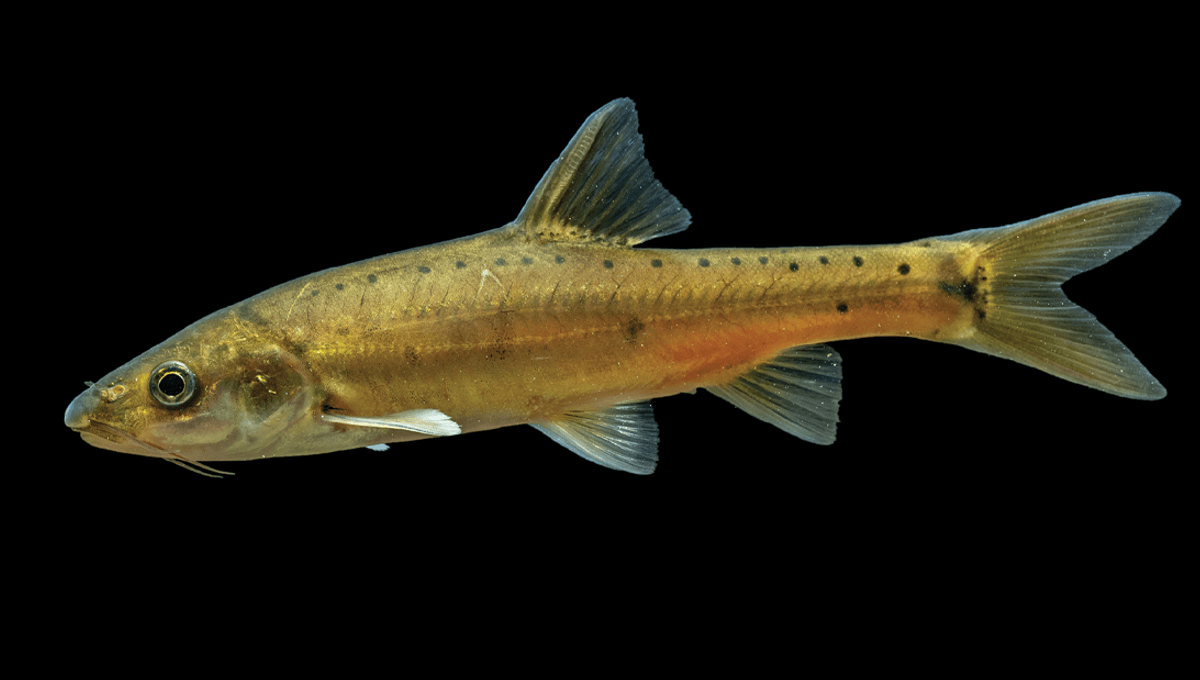
Scientists have struck gold while searching for fish in a Chinese cave, having discovered a brand-new species that’s not only got a gilded exterior, but also appears to still be evolving.
ADVERTISEMENT
The fish, which was identified during surveys carried out in southwestern Guizhou Province, has been named the Xingren golden-lined fish (Sinocyclocheilus xingrenensis), after the nearby city. It’s thought to live exclusively in this area, although the researchers wrote in the study describing the new species that much else about its ecology is still to be discovered.
They were able to separate the new golden fish from other members of its genus – many of which also live in caves carved out within southwestern China’s karst landscapes – based on its DNA and appearance. For example, compared to its most similar species within the Sinocyclocheilus genus, the Xingren fish is smaller and has a different number of rays making up its fins.
But those are far from the only distinguishing features of this fish. In fact, looking beyond its golden gleam, there’s actually something quite confusing about S. xingrenensis.
This fish is scaleless, which is a common adaptation for fish that live in caves. On the flipside, the Xingren golden-lined fish also has massive eyes, at least if you consider that it doesn’t seem to have much need for them given that it’s, y’know, pretty dark underground. Lots of other cave-dwelling creatures have either reduced eyes or have ditched them entirely. So, what’s going on?
The answer, according to the study authors, could be that S. xingrenensis only moved into its cave habitat relatively recently, and as a result, it’s still in the process of adapting to its new home.
Using genetics to dive deep into the evolutionary history of Sinocyclocheilus, the team determined that the loss of scales within this genus “may not be very ancient”, having occurred sometime during the Pleistocene, a geological period that spanned from around 2.6 million to 11,000 years ago.
ADVERTISEMENT
“This further suggests that most cave fishes may not have lived in cave ecosystems for more than a few million years,” write the authors. “Thus, together with the eyes and scales, we hypothesize that the new species may be undergoing a gradual evolutionary process towards caves.”
Whether or not the Xingren golden-lined fish is able to continue along that evolutionary path could be in doubt. Despite having only recently been described, this fish might already be under threat – from us.
“Although the population of this new species is not extremely small, its habitat is located in the center of the village, making it more susceptible to anthropogenic disturbance,” the study authors report. “Moreover, with the potential for future urbanization in the village, there is a significant risk of habitat degradation and destruction in the near future.”
With a good ol’ dose of conservation, let’s hope it sticks around.
ADVERTISEMENT
The study is published in Zoosystematics and Evolution.
Source Link: Never-Before-Seen Golden Cave Fish Discovered In China Still Evolving To Live Underground